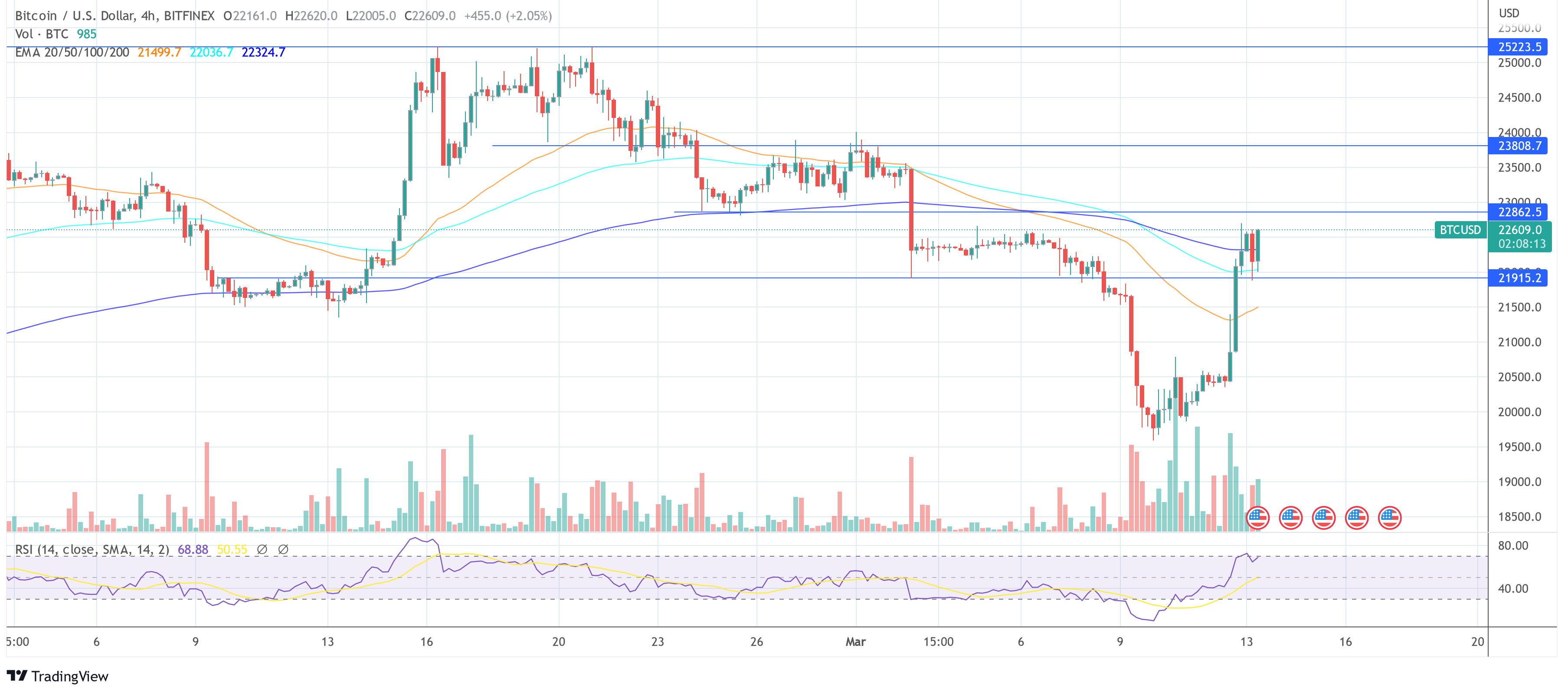According to a tweet today from Arthur Hayes, co-founder of BitMEX, Bitcoin and the broader crypto market are poised for a new bull run in the face of the brewing banking crisis. But there are some question marks behind the assertion.
Will the Fed really make an early pivot even though inflation is still running hot? Has the Fed really cranked up the money printing machine again to bail out Silicon Valley Bank (SVB), kicking off Quantitative Easing (QE)? There is extremely high speculation about this at the moment, but the answer is far from clear.
Will The Fed Pivot And Bitcoin Rise?
U.S. Federal Reserve (Fed) chairman Jerome Powell has consistently emphasized in recent months that he will keep raising interest rates until inflation is back at 2% or until something breaks. And that moment may have arrived, as analyst Dylan LeClair, among others, explains in his latest tweet, referring to the Fed Funds Futures.
Boy oh boy, here we go.
The first real cracks in the Fed's tightening regime have emerged, and it happened FAST. pic.twitter.com/PrEQRft9qS
— Dylan LeClair
(@DylanLeClair_) March 13, 2023
Treasury Secretary Janet Yellen admitted in an interview with CBS that the SVB collapse was not caused by the crypto or tech industry at its core. She admitted that the SVB’s problem was buying government bonds.
The problems of this bank [SVB], from reporting about its situation, suggest that because we’re in a higher interest rate environment, assets that it holds, many of which are Treasury assets, or mortgage-backed securities that are guaranteed by the government lose market value, and the problems of the tech sector aren’t at the heart of the problems of this bank.
And Powell should be equally aware of this. “The Fed by buying low price bonds at par has just admitted the entire US banking sector has an asset / liability mismatch, and it’s 100% due to easy then tight monetary policy. Powell does not want this,” Hayes explained recently.
Has Something Broken?
And the first cracks in the Fed’s quantitative tightening (QT) cycle are imminent. Through its new Bank Term Funding Program, the Fed is bailing out all lost deposits in shuttered banks, such as Silicon Valley Bank and Signature Bank. Even though the Fed is only replacing existing money, the signal effect is clear.
The Fed has raised interest rates so fast that something in the financial system has been broken and is ready to backpedal. That’s the view of popular analyst “tedtalksmacro,” who wrote today, “Unofficial quantitative easing begins Monday. This is so bullish [for Bitcoin].”
But what’s the implication? Will the Fed completely suspend its rate hikes? Citi’s Hollenhorst believes that before the Fed acted, it was unlikely that the recent bank failures were systemic and that possibility is even less likely now.
“We believe the terminal rate will likely reach at least 5.5-5.75% and remain at that level for some time. A 50 bps rate hike is still possible,” Hellenhorst concluded.
Dissenting is Goldman Sachs, which no longer expects a Fed rate hike next week due to concerns about the banking system and forecasts that the Fed will suspend its rate hikes in March before raising 25 bps in April, May and June.
Traders seem to agree more with Gold Sachs, as 2-year US yields posted one of the biggest three-day drops in history. As Bloomberg journalist Lisa Abramowicz pointed out, it’s amazing how much traders have lowered expectations for the Fed’s final policy rate.
They now expect the Fed to raise rates only once more before cutting them later this year. The implied peak has fallen from an expected 5.7% on Thursday to 4.8%
It's amazing how much traders have brought down expectations for terminal Fed funds rates. They're now expecting the US central bank to just raise rates just once more before cutting them later this year. The implied peak rate is down to 4.8% from an expected 5.7% on Thursday. pic.twitter.com/z2piNUCRsj
— Lisa Abramowicz (@lisaabramowicz1) March 13, 2023
At press time, Bitcoin traded at $22,609, up 9.8% in the last 24 hours.








